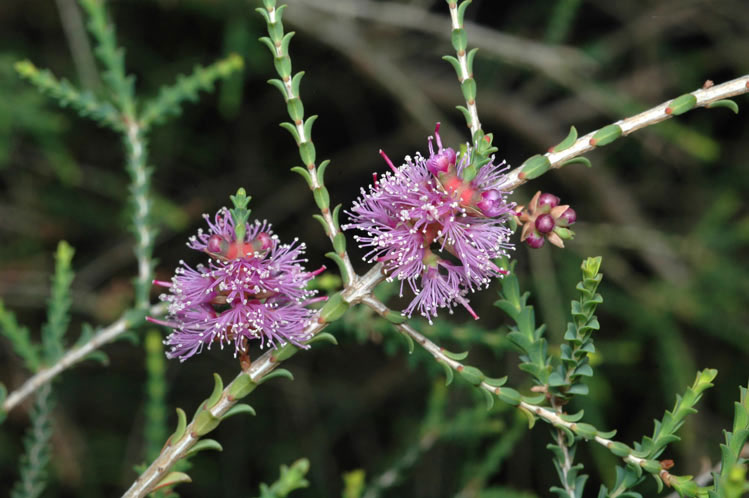Scientific Name: Melaleuca gibbosa
Common Name: slender honeymyrtle
Family Classification (Clade): Eudicots
Family: Myrtaceae
Form Description: Shrub with branches often slender and spreading.
Height (m): 1 – 3
Flowers: Mauve, in small dense oblong spikes. Flowers sparsely throughout the year, mainly spring.
Fruit: Woody capsule – in cylindrical spikes. The branches continue to grow so that old fruits encircle the stem. Seeds are very fine, like short hairs.
Municipality
Plant Communities
Habitat Notes
Wet, peaty ground in east, north-east and north-west. Grows vigorously in exposed spots such as Cape Bruny and Hurricane Heath.
Site Tolerance
Exposed, Moist, Windy
Soil Tolerance
Loam, Nutrient-poor, Poorly-drained, Sandy, Well-drained
Frost Tolerance
Moderate
General Notes
Bird attracting. Susceptible to browsing by possums and wallabies.
Propagation Calendar
-
Flowering Month
Jan Feb Mar Apr May Jun Jul Aug Sep Oct Nov Dec -
Seed Collecting Month
Jan Feb Mar Apr May Jun Jul Aug Sep Oct Nov Dec -
Sowing Month
Jan Feb Mar Apr May Jun Jul Aug Sep Oct Nov Dec -
Cutting Month
Jan Feb Mar Apr May Jun Jul Aug Sep Oct Nov Dec
Propagation Method
Seed Information
Seed Collection
Unlike some Melaleucas, Melaleuca gibbosa drops its seed on maturity.
Seed Treatment Method
Standard Scatter seed thinly on to damp potting mix. Hold seed in place by covering with more potting mix to approximately the depth of the seed size.
Seed Storage Life
Long
Seed Treatment Notes
Seed gives good germination. Soluble fertilizer may be needed if no growth is obvious 2 weeks after germination.
Germination Time
10-30 days
Cutting & Division Information
Can be struck from cuttings collected when plant is flowering. Hormone powder assists.
